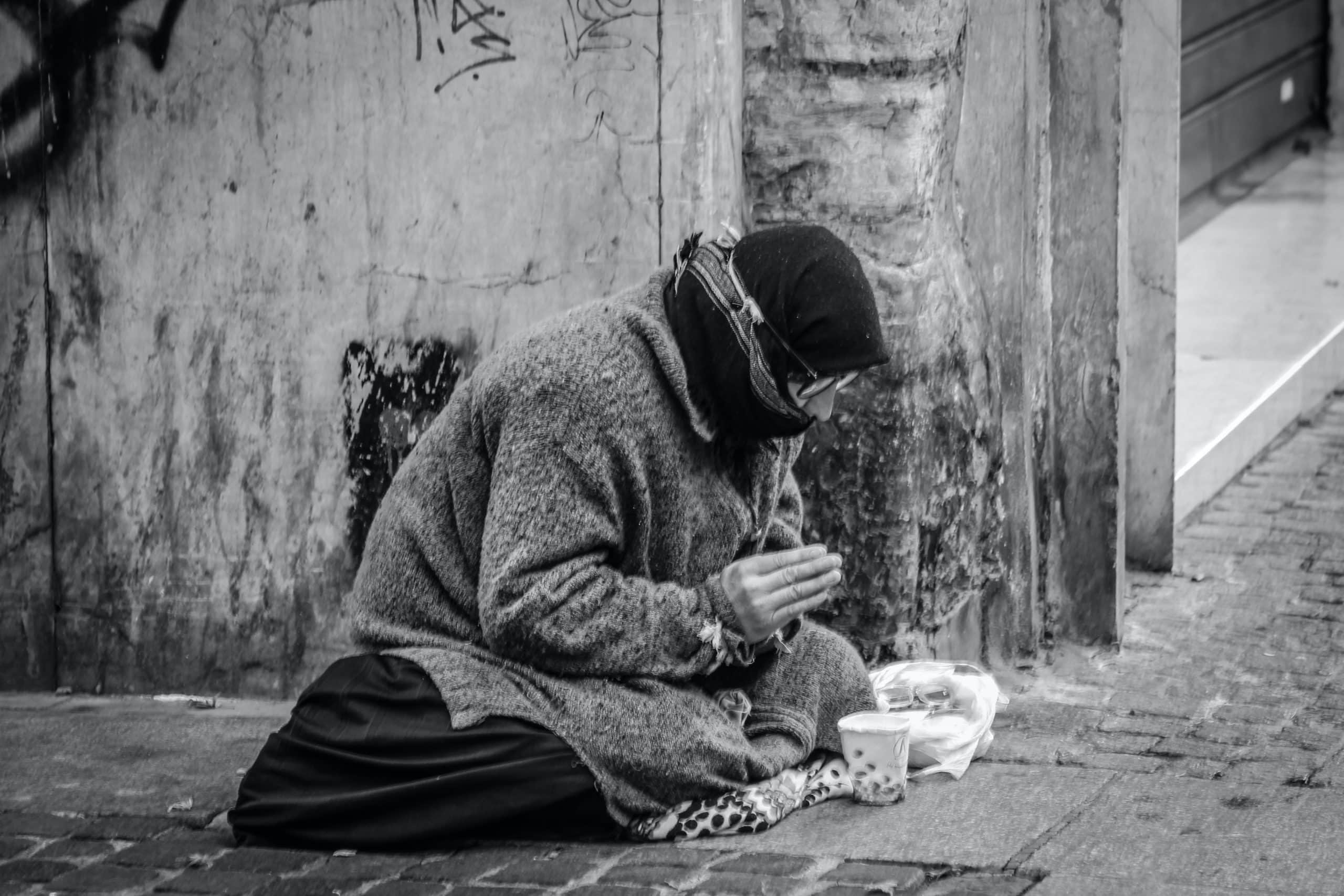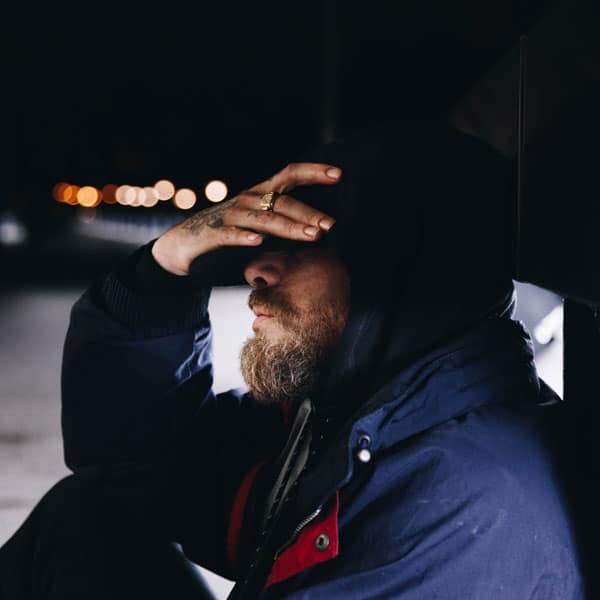
Addiction and Homelessness
Oftentimes, substance abuse is both a cause and a result of homelessness, frequently arising after people lose their housing. The stressful life of living on the streets, finding food, and begging for money only makes circumstances worse. Individuals who suffer from homeless may also develop behavioral and mental health issues. This will cause them to go down a spiral of self-medication and never recover from their addiction.
Table of Contents
Homelessness in the United States continues to be a significant issue. While there has been a downward trajectory in homelessness over the past 14 years, COVID-19 could reverse this progress.1
Individuals who experience homelessness are more likely than the general population to suffer from substance abuse issues, alcoholism, and mental health disorders. 3
Recovering from these disorders can be extremely challenging for the homeless population, more so than for the general population.3 Fortunately, treatment programs are available for homeless individuals, and there are measures these programs can take to treat homeless people more effectively.2
Prevalence
Homelessness is a significant issue in the United States and may affect more than 2 million people per year.2 In 2019, 17 out of every 10,000 people, which totals 567,715 individuals, in the United
States experienced homelessness in a single night. Homelessness increased by 3% in 2019 compared to the previous year. However, homelessness has decreased by 12% overall since 2007. Unfortunately, the COVID-19 pandemic could completely alter this downward trajectory for homelessness prevalence.1
Most statistics regarding substance abuse show that it is much more common among the homeless population than among the general population. An estimated 257,000 homeless individuals have a severe mental illness or experience chronic substance abuse. In 2003, the Substance Abuse and Mental Health Services Administration estimated that 38% of homeless people were dependent on alcohol, and 26% abused other drugs. 3
In 2018, the National Household Survey on Drug Use and Health found that only 10.1% of all people in the United States over the age of 12 said they used drugs in the past month. The Substance Abuse and Mental Health Services Administration found that only 8.4% of U.S. adults had a substance abuse issue in the past month.3
Understanding Homelessness
Homelessness is usually a temporary condition rather than a permanent one, and it does not define the individuals experiencing it. Homelessness is rarely permanent for anyone, and the number of people who experience homelessness changes each day. Any estimation of the number of homeless individuals is a snapshot in time.4
There is no one federal definition of homelessness, and the definition can change depending on context and source. Generally, someone who experiences homelessness falls under one of three categories:5

The most apparent depiction of homelessness is that of people who live on the streets. Other people without shelter, such as those who camp outdoors, live in cars, or sleep in abandoned buildings, are also considered homeless.

Sheltered homelessness includes those who stay in emergency shelters or transitional housing for the homeless. Some families with children might stay in motels, hotels, or other overcrowded and unsafe temporary housing.5
Sheltered homelessness includes those who stay in emergency shelters or transitional housing for the homeless. Some families with children might stay in motels, hotels, or other overcrowded and unsafe temporary housing.5


There are also three clusters of homelessness that refer to the length of time and number of times an individual experiences homelessness: 5
Individuals who are transitionally homeless are usually homeless for a short time or experience a single stay in a shelter for a longer duration.


Individuals who are transitionally homeless are usually homeless for a short time or experience a single stay in a shelter for a longer duration.

Some homeless people are frequently in and out of homelessness and may temporarily stay in a shelter several times throughout their lifetime.
Some individuals experience homelessness regularly and for long periods. They may stay in a shelter or live on the streets during homelessness. 2


Some individuals experience homelessness regularly and for long periods. They may stay in a shelter or live on the streets during homelessness. 2
Among homeless individuals who stay in shelters, an estimated 80% are transitionally homeless, 10% are episodically homeless, and 10% are chronically homeless. 2
Substance Abuse and Homelessness
The United States Conference of Mayors conducted a study in which 25 cities shared the top reasons for homelessness in their jurisdiction. Of the 25 cities, 68% reported that substance abuse was the number one reason for homelessness among single adults. In a separate study, homeless individuals were interviewed, and two-thirds of those who participated reported that drug abuse and alcoholism were a significant cause of their homelessness.5
There are many reasons why substance use disorders are so prevalent among the homeless population. Substance abuse is a major contributing factor for becoming and remaining homeless. Substance abuse is also correlated with loss of employment, poor physical health, and a lack of necessary services. Changes in the housing market, loss of public services or institutional support, and social issues such as poverty and racism affect why someone becomes homeless and who becomes homeless. 2
Once an alcohol or drug dependence is formed, it becomes increasingly difficult for the user to separate from drugs and alcohol. If this occurs alongside homelessness, the obstacles that stand in the way of attaining recovery become even more challenging to overcome.
People often wonder whether substance abuse causes homelessness or homelessness causes substance abuse. The reality is, it can go both ways. Substance abuse does often lead to homelessness.
Addiction can be powerful enough to interfere with family relationships and friendships and can create job loss. Job loss and lack of other resources can make it difficult for someone to pay bills, ultimately leading them to lose their housing, especially if their addiction takes precedence over getting back on track. 3
Simultaneously, homeless individuals often use substances to cope with their situation, even if they did not experience substance abuse before homelessness. They may use drugs and alcohol to get relief, however temporary, from the problems they face.
Unfortunately, dependence upon substances makes these problems worse and makes it even more difficult for them to obtain a steady job and housing. At times, homeless people may also use drugs and alcohol because they believe it is an essential aspect of acceptance among the homeless community.3
Alcoholism and Homlessness
Researchers conducted a study in New York City that focused on chronically homeless individuals dependent on alcohol. They found that all of these people started drinking as a child and quickly became dependent on alcohol.
Additionally, over two-thirds of these individuals were children of parents who suffered from alcoholism, and many of them experienced abuse as a child. Almost all of them left home by age 18, and over half of them suffered from a psychological disorder, including psychosis and anxiety, and mood disorders. 6
The study concluded that alcohol dependence in childhood is a major contributing factor to chronic homelessness. Perhaps a reason for this is that securing alcohol becomes more important than paying for housing for these individuals.
Furthermore, when an alcoholic prioritizes alcohol over meeting their basic needs, they are less likely to seek treatment and recover. This prioritization can ultimately lead to frustration and depression, which creates an even greater desire to abuse alcohol. This cycle can continue for an entire lifetime without expert intervention.6
It is complicated to collect data on homeless individuals and addictions they may experience at a given time, considering a large portion of the homeless population is not included in census data. Additionally, homeless individuals in shelters are likely to underreport their alcohol consumption if they are expected to abstain during their stay.7
Mental Health Issues and Homelessness
The Office of National Drug Control and Policy estimates that almost two-thirds of those who experience perpetual homelessness have a substance use disorder or other chronic health condition. About 30% of those who experience chronic homelessness suffer from a severe mental health issue. These mental illnesses can make it increasingly difficult to access and maintain stable, affordable, and appropriate housing for individuals or families.8
Homelessness among those who suffer from mental health issues has increased steadily since the 1970s. In 2006, a study found direct correlations between the decrease in available psychiatric hospital beds and the increase in crime, arrest rates, and homelessness.
Some hospitals may choose to release patients before they are ready to save money. However, releasing patients early inevitably increases taxpayers’ costs as individuals move to more expensive jails and prisons. 9
Treating the Homeless Population
It is difficult for anyone to recover from an addiction, and for homeless people, it can be even more challenging. Often, homeless individuals are more focused on surviving each day than on personal growth and development.
Finding things like food and shelter are of much higher importance than seeking drug and alcohol addiction counseling. Additionally, many homeless people are not connected to their friends and family. The lack of this vital support system can make it even more difficult for them to recover.3
Even if someone who experiences homelessness can break free from their addiction or dependence upon drugs and alcohol, they may find it extremely difficult to resist substances that are so easily accessible to them. Substance abuse disorders also often occur alongside mental illness.
Those who experience untreated mental illnesses may use street drugs as a way to self-medicate. Home individuals who experience both substance disorders and mental disorders face additional obstacles to recovery.
These obstacles include increased risk of violence and victimization and frequently moving between streets, jails, and emergency rooms.3 Fortunately, there are treatment facilities that offer substance abuse treatment to homeless individuals.
These treatment centers often provide the following: 10
- Access to housing. A stable place to live is essential in recovery for people who experience homelessness.
- Well-trained staff. An effective treatment program must include compassionate, flexible, and experienced staff.
- Client-centered services. It is critical to offer a treatment plan tailored to the individual to provide more effective recovery.
- Integrated services. Homeless people often experience co-occurring mental disorders, making it crucial to have multidisciplinary professionals who provide coordinated treatment.
- Comprehensive services. Treatment services should address all needs of their patients, including survival skills and social needs, to treat each individual as a whole rather than their symptoms alone.10
Homeless individuals usually obtain treatment at psychiatric hospitals and emergency rooms, but other options do exist. Residential and outpatient programs often offer more complex services that may be necessary for recovery.
Unfortunately, outpatient programs do not provide housing which can be an essential factor in a homeless person’s recovery. However, there are additional housing options that homeless individuals in outpatient programs can utilize.10
Additional housing options for homeless people with substance abuse and mental disorders include: 2
- Sober or dry housing. This type of accommodation enforces an abstinence policy, and substance use of any kind may result in housing termination.
- Damp housing. In this type of accommodation, people with and without substance use disorders live with each other, and abstinence is not strictly enforced. However, illicit substances and public alcohol use are not allowed. They may also offer treatment services.
- Wet housing. This type of accommodation uses a harm-reduction approach to refer clients to treatment services. House members are not required to utilize treatment services, and alcohol use is permitted. The use of illicit substances is prohibited.2
- Eliminating or decreasing the waiting period between enrollment and entry
- Having realistic expectations of clients and explaining them
- Increasing client contact with case managers
- Making services more easily accessible to clients, including housing
- Improving the environment of the program facility
- Ensuring responsiveness to clients’ needs
- Inviting family members early to educate them on the program
- Offering opportunities for recreational activities and self-improvement
- Focusing on significant relapse prevention efforts
Sources
- State of Homelessness: 2020 Edition. (2021, February 09). Retrieved from https://endhomelessness.org/homelessness-in-america/homelessness-statistics/state-of-homelessness-2021/
- Center for Substance Abuse Treatment (US). Behavioral Health Services for People Who Are Homeless. Rockville (MD): Substance Abuse and Mental Health Services Administration (US); 2013. (Treatment Improvement Protocol (TIP) Series, No. 55.) A Review of the Literature. Available from: https://www.ncbi.nlm.nih.gov/books/NBK138716/
- https://www.va.gov/HOMELESS/nchav/resources/docs/mental-health/substance-abuse/Substance-Abuse-and-Homelessness-508.pdf
- National Coalition for the Homeless June 2017. http://www.nationalhomeless.org/factsheets/How_Many.html
- United States Interagency Council on Homelessness https://www.usich.gov/resources/uploads/asset_library/USICH_OpeningDoors_Amendment2015_FINAL.pdf
- McCormack RP, Hoffman LF, Norman M, Goldfrank LR, Norman EM. Voices of homeless alcoholics who frequent Bellevue Hospital: a qualitative study. Ann Emerg Med. 2015 Feb;65(2) doi: 10.1016/j.annemergmed.2014.05.025. Epub 2014 Jun 26.
- National Institue on Alcohol Abuse and Alcoholism https://www.niaaa.nih.gov/alcohols-effects-health/professional-education-materials
- Housing and Shelter. (n.d.). Retrieved from https://www.samhsa.gov/homelessness-programs-resources/hpr-resources/housing-shelter
- Homeless Mentally Ill Facts and Figures. (2019, January 23). Retrieved from https://mentalillnesspolicy.org/consequences/homeless-mentally-ill.html
- Kraybill, Ken. Zerger, Suzanne. Providing Treatment for Homeless People With Substance Use Disorders (2003). https://nhchc.org/wp-content/uploads/2019/08/CA05RCaseStudies-FINAL5.pdf